- PORTABLE HEATER: Portable propane heater designed for emergency heat, tents, campers, job sites, porches, decks, garages, tailgates, barns, sheds, ice fishing, hunting blinds, and more
- HEAT SPACE: Perfect for heating enclosed spaces up to 225 square feet
- PROPANE GAS: For use with propane gas; Runs off a 1-pound cylinder of propane and can connect directly to a 20 pound cylinder with optional hose and filter
- FEATURES: Includes Piezo igniter, Accidental tip-over safety shut-off, swivel regulator and fold-down handle, and hi and low heat settings
- SPECIFICATIONS: 4,000 or 9,000 BTU per hour; Run time (max BTU): 3 hours; Run time (min BTU): 6 hours; Heating technology type: Radiant; Power type: Propane; Indoor safe: Yes; Fuel consumption/burn rate (Gal/Hr): 4,000 BTU = 0.044 gal/hr, at 9,000 BTU = 0.099 gal/hr; Dimensions (L x W x H): 14.25 x 9 x 15 inches; Weight: 10.6 pounds
Mr. Heater F232000 MH9BX Buddy 4,000-9,000-BTU Indoor-Safe Portable Propane Radiant Heater, Red-Black
$89.99 Original price was: $89.99.$71.71Current price is: $71.71.
Last updated on Details
Category: Indoor Propane Space Heaters
7 reviews for Mr. Heater F232000 MH9BX Buddy 4,000-9,000-BTU Indoor-Safe Portable Propane Radiant Heater, Red-Black
Add a review Cancel reply
Related products
Indoor Propane Space Heaters
Rated 3.00 out of 5
$1,895.00
Sale!
Indoor Propane Space Heaters
Mr. Heater F270800 125,000 BTU Portable Propane Radiant Heater,Multi , Black
Rated 3.10 out of 5
Indoor Propane Space Heaters
Mr. Heater 10,000 BTU Vent Free Radiant Dual Fuel Heater,White
Rated 1.00 out of 5
$175.86
Indoor Propane Space Heaters
$18.56




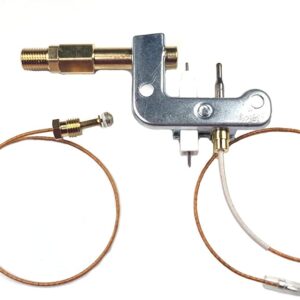
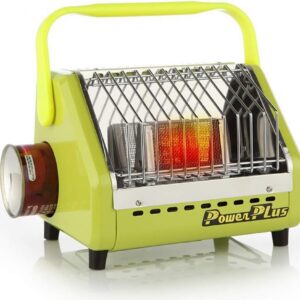
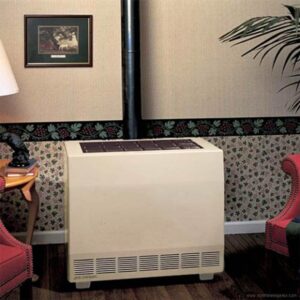
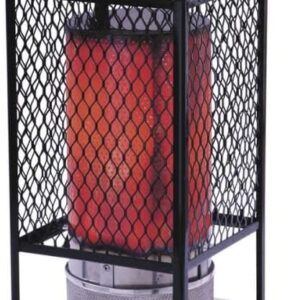
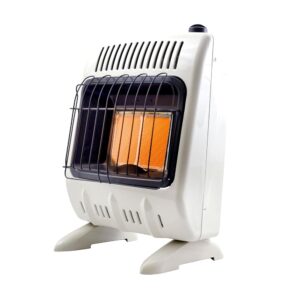
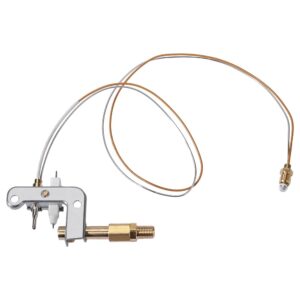
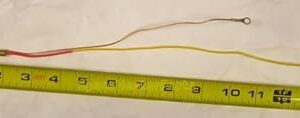

Vinny P. –
I have, over the past few years, grown tired of trying to use a small portable electric heater (with two heat settings, rated at 850W and 1500W) to heat an 8.5 x 8.5 foot greenhouse dome tent (the ceiling of this dome tent averages 7′ to 8.5 feet in height) that sits in my backyard and has been adapted for use as an outdoor office and meditation room. This outdoor dome tent, which occupies about 72 sq. ft., and about 585 cu. ft. of space, and which has translucent plastic tent walls, sits on the ground, and the floor is a tarp sitting on the ground, covered with some old carpets for a bit of comfort.
This dome tent is entirely uninsulated, and, due to the translucent walls that easily allow heat to escape even in the near-infrared (NIR) and visible light regions of the spectrum, it offers even far less insulation than would a tent structure of the same size/volume that used an opaque material such as green tent fabric. This dome tent is equipped with eight zippered screened windows (four near ground level, and four at a height of 6′ above ground) and I always leave each window partially unzippered year-round to allow for the flow of fresh air into the dome tent; this is important at all times anyway for adequate ventilation, but it becomes doubly-important when using a portable combustion heater such as this heater inside a dome tent such as this!
So, as a result of the factors that I have discussed above, this structure has always been somewhat of a challenge to heat using the 1.5 kW electric heater whenever outdoor temperatures have falled significantly below about 55 degrees F, and it has been impossible to get the interior to anywhere near even 70 degrees F when outdoor temperatures have dropped to 50F or below.
So, I finally decided to stop using the portable electric heater and to upgrade to a protable propane heater that was rated and certified as indoor-safe, and that could deliver at least 8,000 to 9,000 BTUs of heat. I finally purchased (via Amazon Marketplace) this Mr. Heater MH9BX portable propane heater, which has heat settings of 4,000 BTU and 9,000 BTU, after careful research into each of the various brands and models of portable propane heaters available on the market. I particularly liked the stable and robust design of this heater, and the fact that it has auto-shutoff for tilting, auto-shutoff for low oxygen levels, and also because of the pilot light and the built-in piezoelectric igniter.
At the same time that I ordered this heater, I also ordered a Mr. Heater 12; propane gas hose, and a Mr. Heater inline propane gas filter for use with it.
When the unit first arrived, I tested it for a week using a 1 lb. propane tank as the propane fuel source, and then, when that first tank had emptied, I installed the propane fuel filter and the 12′ hose running to a 20 lb. propane tank outside the dome.
I am extremely pleased with the performance of this heater. It is easy to use, and it produces a lot of heat, far more than my old electric heater did on its high power setting of 1500 W. In fact, I have run tests over the past few days (late October 2013, at an altitude of 1,000 feet in the Appalachian mountains, where we live) in the early morning hours, at about 4 AM (three hours before sunrise), where outdoor temperatures were about 36 degrees F with a 2-4 mph wind, and where the starting interior temperature inside the dome tent was also 36 degrees F. Using this heater on the High heat setting (it is rated at 9,000 BTU at this setting), the interior temperature of the tent was raised to above 70 degrees F within 6-7 minutes from start (this is amazing to me!), and was raised to 82 degrees F within 25 minutes of start; the interior temperature finally stabilized during each test run at about 83 degrees F while the outdoor temperatures were still at 36F.
Given the fact that this dome tent has a lot of interior volume for its floor dimensions, and also because this dome tent has very poor insulation (the average insulation rating for the translucent plastic tent material on the walls and ceiling is less than 0.1 R, and the floor, consisting of a tarp and some old carpets sitting on bare ground, also has about the same terribly poor R rating, and also beause of the fact that I always leave all 8 zippered windows in the dome tent partially cracked, I am amazed that this little heater is able to heat the interior to of this structure, in the middle of the night (therefore there is no incident heat from sunlight entering the structure) from 36F to 83F in a bit over a half hour; this is an increase in interior temperature of 47 degrees F (over outdoor temperature and over interior starting temperature) in a structure that is entirely uninsulated and that loses heat very rapidly! In fact, this is an acid test for a heater such as this, for this is a kindof worst-case test for a portable heater!
My above-cited tests, along with others that I have not enumerated here, show me that this heater, on the High heat setting, should be able to keep the interior temperatures of this totally-uninsulated dome tent at a comfortable level down to outside air temperatures of around 20 degrees F, and should be able to keep the interior temperature at “usable” levels down to outdoor air temperatures of below 10 degrees F/
If I could give this little portable combustion heater an Amazon rating of 7 stars instead of 5 stars, I would do so!
And now, since I am a scientist and an engineer, let me share a few caveats with you about the use of this heater, and of ANY portable propane heater:
Particularly if using this heater indoors, you will want to be absolutely sure to follow the manufacturer’s safety recommendations to carefully check all propane gas connections for any possible leaks after installing, and to check them again prior to each use, tightening connections as needed to eliminate even small propane gas leaks.
When you are first starting the stove after having installed a new 1 lb. propane tank directly (i.e,. no hose used) to the heater, bear in mind that the pilot light will not immediately light, and that even when it first lights, it will likely go out (i.e., extinguish) a few times for the first 45 to 60 seconds, because of air present in the internal propane gas line. Thus, you may need to hold the pilot light control down for a few seconds to purge any air present in the propane line before the pilot light will stay lighted. In other words, after having changed tanks, remember to bleed the fuel line by holding the pilot light control down prior to sparking, else you will be “wasting” some sparks!
And, of course, once the pilot light has ignited and stayed lit, it is important to hold down the pilot light control for at least 30 seconds until the internal pilot light safety thermocouple has warmed up sufficiently to allow the pilot light to stay lit.
When you are first starting the stove after having installed a new external propane tank (usually a 20 lb. tank) using propane gas hose (they are available in lengths ranging from 5 ft to 12 ft) remember that ths hose will, at first, also contain a lot of air, and thus you will wish to bear in mind that the pilot light will not immediately light, and that even when it first lights, it will likely go out (i.e., extinguish) repeatedly a few times for the first 60 to 90 seconds because of air present in the internal propane gas line. Thus, you may need to hold the pilot light control down for a bit seconds to purge any air present in the propane line before the pilot light will stay lighted. Once any stray air present in the propane gas line has been cleared, the pilot light will then stay on continually. In other words, after having changed tanks, remember to bleed the fuel line by holding the pilot light control down prior to sparking, else you will be “wasting” some sparks!
Late Update, as of October 27, 2018:
This amazing little heater is still working perfectly! I love it!
Paul Dasilva –
Great heater and size.
Stephen –
Feels well built.
Puts out a lot of heat.
It’s the only one that’s really indoor-safe AFAICT, they do specify at minimum a 3″x3″ ventilation opening.
It worked great to keep us comfortable in a large screen tent during a few cold rainy autumn days and evenings.
Straightforward operation.
Know though that is has no thermostat (it’ll keep putting out heat).
Also I would advise against using it in a sleeping tent.
It has worked well for us for this trip, and I’m also glad to have it in case of emergency.
Cliente de Amazon –
Lo he usado en un par de ocasiones y funciona hasta ahora perfectamente.
Ricardo Ruiz –
El dispositivo es bastante bueno y seguro, sin embargo creo que la duración de un tanque de propano tipo camping (verde) es una tanto corta en HI posición.
Sonny –
We recently returned from a tent-camping trip to Vogel State Park in the North Georgia Mountains. (Our tent is a 9×7 Coleman Dome Tent) Prior to going, we learned that the temperatures would be dipping down into the high 20s during the overnight and early morning hours. Since we had never camped in temps that low, we decided to purchase the Mr. Heater based on the reviews that we had read. As is the case with all reviews, you have to take the good with the bad and I’ve found that I search out the bad, as well as the good, so that I may be aware of any potential issues. In our case, our issues were very minor, and for the most part the unit performed flawlessly. Keep in mind the tent size and square footage when making your purchase. We felt that it was more than adequate for our tent size.
PROS:
Ease of use. The propane cylinder is very easy to install and remove. Keep in mind that the cylinders range in cost from about $3.00-$6.50 depending on brand. We camped for three days and used three cylinders (the amount of cylinders that you will need will depend on how long you use the unit. One night we needed it for about 5+hours, so it was necessary to change during the night.) We kept the unit in the tent with us, but made sure that it had necessary distance away from our air mattress and the tent side walls. Though the unit comes with an emergency shut-off in case of low oxygen, we made sure that our tent had adequate ventilation while operating the unit. Primarily, we unzipped one of our windows slightly, plus the top of our tent is mesh and covered by the rain fly.
The ignition was very easy most of the time, however, if there was anything remotely close to a con, it would have to be that sometimes it was necessary for us to press the control knob 5-10 times to get the pilot to re-light. This causes a pretty loud “clicking” noise in an otherwise quite campsite. Other times, after two or three presses of the control knob, the pilot would fire right up.
The unit is very portable and light.
The heat is very substantial in low or high setting. As I previously stated, it was more than adequate for our 9×7 dome tent.
There is nothing to put together and the directions for use are very easy to comprehend. Follow the directions and be sure to do an initial test of the unit prior to using in a tent for the first time. It will produce a slight odor as the directions state, but it will soon dissipate.
CONS:
Sometimes it was necessary to push the control knob 5-10 times to get the pilot light to fire. Other times it fired right up during the normal 1-3 pushes.
There are only two settings: low and high. While this is okay with us, others may prefer more of a variable type of setting.
J-EV –
The heat is instant and really well made in the US, not a Chinese imitation. I actually think it is the same company as Dewalt.
The site offered me a hose connection kit ‘as if they are bought together’ that was supposed to be made by Mr Heater (which I don’t know if that is true) and was about 1m long and looked like a silver shower hose and had various different connectors so that you can connect it to virtually anything, but it didn’t have the connector in the kit to connect it to the heater itself and I thought, I’ll just order an adapter but no such thing existed. I had to return that and bought another hose by Mr Heater which is about 5m long for around the same price. Be careful with the hoses as the cheap ones get destroyed by the oil and the corrosion/breakdown of the rubber goes into the heater and damages the heater and remember you are inhaling the toxins.
I also bought the oil filter from another site and got them imported from the US, it fits perfectly on the heater end of the attachment chain of things. Still means the oil went down the pipe if it is a cheap nasty pipe or the mr heater pipe (which is graded and promise not to break down the rubber) and gets to the oil filter which prevents oil getting into the heater. I say all this because propane is oil based gas… The little 1lb cannisters do not need the oil filter as they don’t have the oil problem in the cannisters but the big red propane bottles do have the oil.
I got a bag for it which is actually a cooler/thermal rucksack and it fit the heater inside with the 1lb cannister laid on top and the front pocket with the hose etc. Half the price of the real branded Mr Heater bag. Found here.
https://www.amazon.co.uk/gp/product/B09FDR567Z/ref=ppx_yo_dt_b_asin_title_o06_s00?ie=UTF8&psc=1